As a 75-year-old grandma stuck inside the body of a 24-year-old, I have never been a huge fan of a holiday that has manifested itself in day-drinking and public nudity. But a holiday that requires cake? Well, duh. Have a party and invite me over.
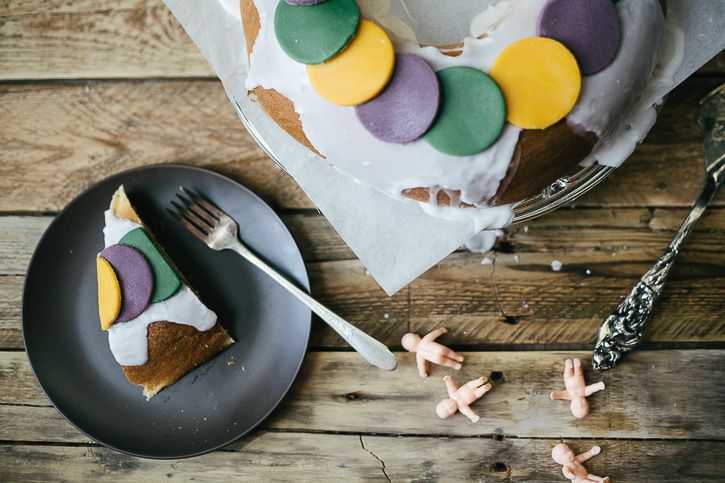
The King Cake is a sacred confection eaten between Epiphany and Mardi Gras. In different parts of the world, there are different traditions for the type of cake, the filling, and the trinket that’s hidden in the center. In the US, a little plastic baby that represents Jesus is hidden inside the cake, and whoever gets the slice with the baby wins. The prize is often the honor of hosting the next King Cake party. (Prize, burden, whatever you’d like to call it…) So the next time you’re looking to break a tooth on a small, plastic Jesus, here is a recipe for you.
More: A King Cake is a perfect finish to a New Orleans-inspired dinner party.
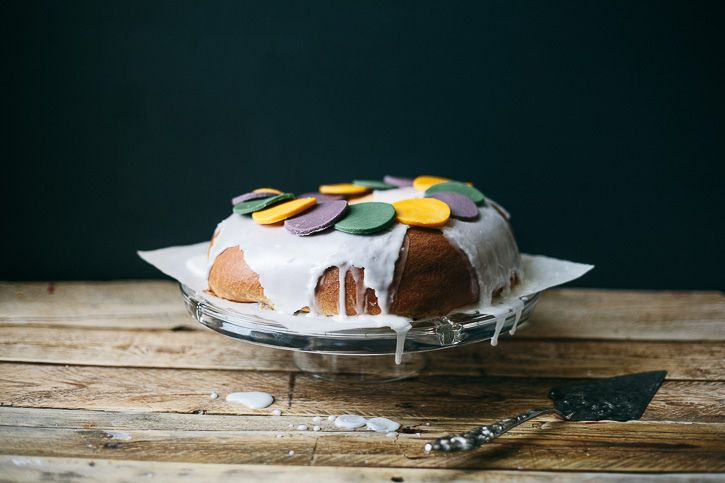
There are a few fillings for a classic New Orleans King Cake that are generally accepted among Mardi Gras die-hards: cream cheese, praline, and some type of fruity deal. The filling is wrapped in a yeast-risen dough and finished off with a powdered sugar glaze and—the bane of my existence—colored sanding sugar. (After many a ruined cake, I simply do not do sanding sugar, which is why I have offered up an alternate, yet still chromatically accurate, design. If you are confident in your sanding sugar skills, however, I say do it.)
This King Cake has a cream cheese-praline filling, and it is so decadent and rich that you might find yourself thinking twice before exposing your tummy (or other things) for some beads.
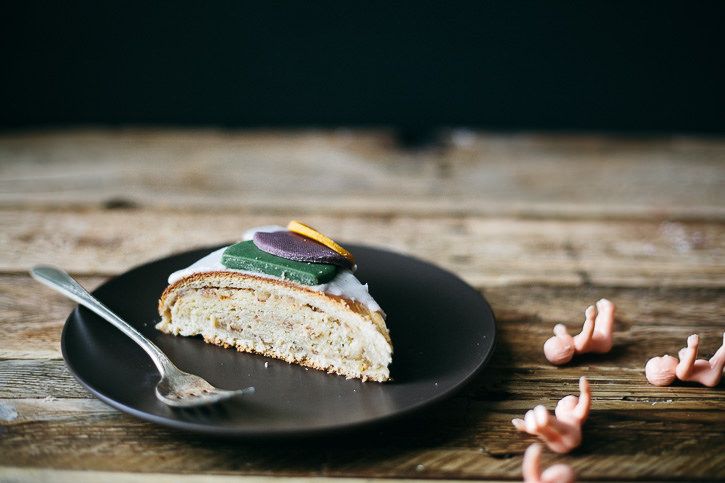
Mardi Gras King Cake
Makes 1 large cake
For the cake:
3/4 cup warm milk
2 1/4 teaspoons of dry yeast (one packet)
1/4 cup plus 1 teaspoon of sugar
1 stick of butter, melted and cooled
2 egg yolks
1 teaspoon vanilla extract
3 cups all-purpose flour, plus more for dusting
1/4 teaspoon ground nutmeg
1 teaspoon kosher salt
For the filling and topping:
1 stick of butter
8 ounces cream cheese
1 cup brown sugar
1 cup toasted pecans, coarsely chopped
1 plastic baby
2 cups powdered sugar
3 tablespoons milk
Sanding sugar, marzipan circles, or other decorations in yellow, green, and purple
Combine the warm milk, yeast, and 1 teaspoon of sugar and let proof. Meanwhile, whisk together the butter, egg yolks, and vanilla extract. In a large bowl or the bowl of a stand mixer, combine the remaining 1/4 cup of sugar with the flour, nutmeg, and salt.
When the yeast mixture is foamy, add it to the dry ingredients along with the butter mixture. Mix to combine. Using a dough hook, or kneading by hand on a floured surface, work the dough for 5 to 7 minutes, adding flour as needed, until it its smooth. Transfer dough to a greased bowl, cover with a damp towel, and let rise for two hours, until doubled in size.
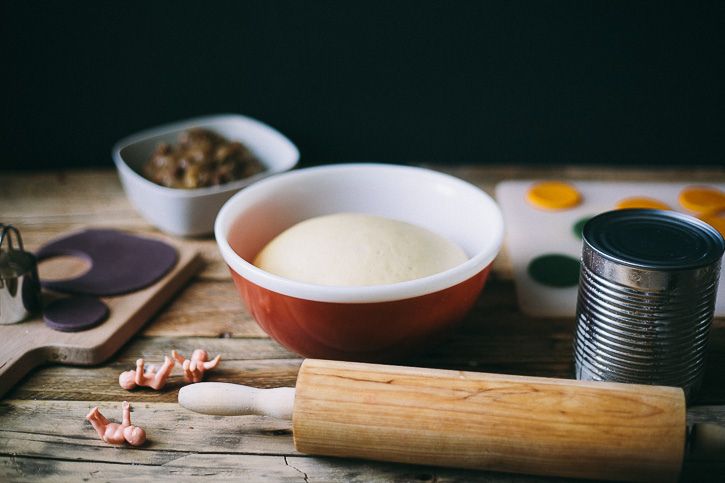
As soon as the dough begins rising, start making the filling. Melt together the butter and cream cheese in a large saucepan. Stir in the brown sugar and continue stirring until the mixture starts to bubble. Remove it from heat, stir in the pecans, and then set it aside to cool while the dough finishes rising.
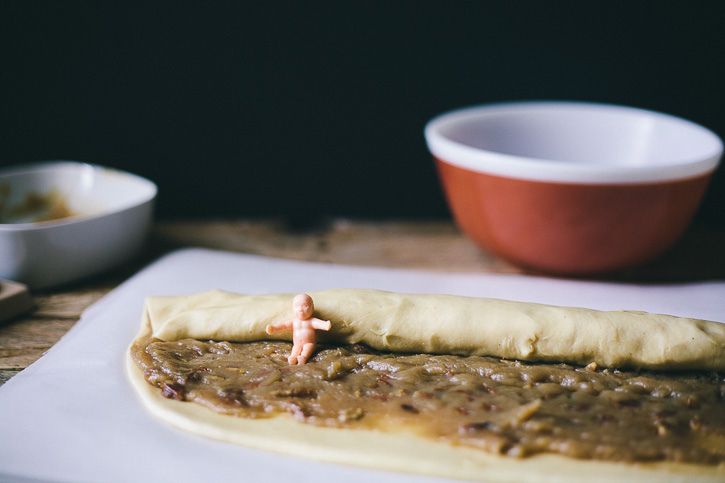
When the dough is finished rising, transfer it to a large piece of parchment paper and roll it out to a 9- x 13-inch rectangle. Spread the filling out evenly, leaving an inch along one of the long sides so that the filling doesn't ooze out. Starting on the opposite long side, roll up the dough like a jelly roll, sticking the baby in somewhere in the middle.
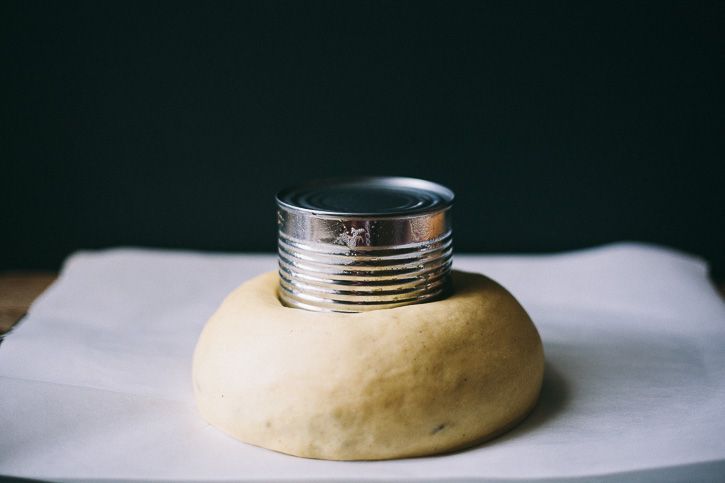
Grease an empty 28-ounce can and place it in the center of a large baking sheet that's been lined with parchment. Gently wrap the dough roll around the can, seam side-down, and pinch the ends well. Let rise for another 30 minutes.
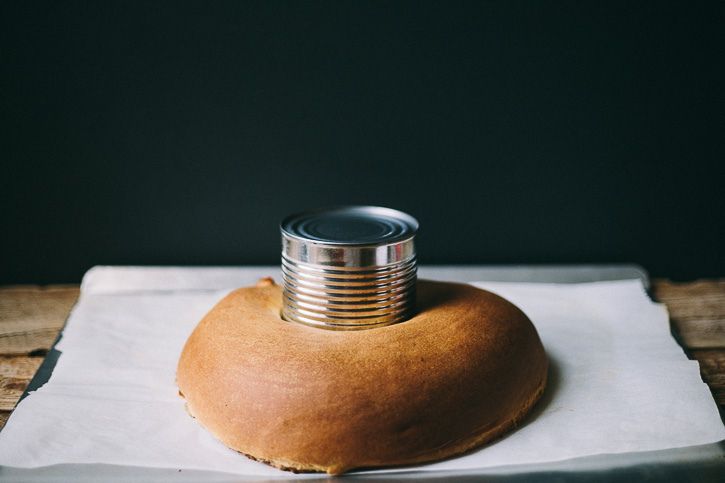
Preheat oven to 375° F. Once the cake has gone through its second rising, bake for 30 to 40 minutes, until the cake is a nice brown color. As soon as your cake comes out of the oven, remove the can. Let the cake cool completely before decorating.
To make the glaze, whisk together the powdered sugar and milk. If the consistency is too thick for your taste, add more milk until it reaches your desired consistency.

Once the cake is out of the oven and cooled, pour on the the glaze and then decorate as you wish. For my decoration, I kneaded liquid food coloring into marzipan, rolled it out, and then cut out circles. If you'd like to go the traditional route and use standing sugar, you can either use store-bought sugar or make your own by placing a few tablespoons of white sugar in a ziploc bag with a few drops of food coloring and shaking it up.

See the full recipe (and save and print it) here.
Photos by Molly Yeh










See what other Food52 readers are saying.